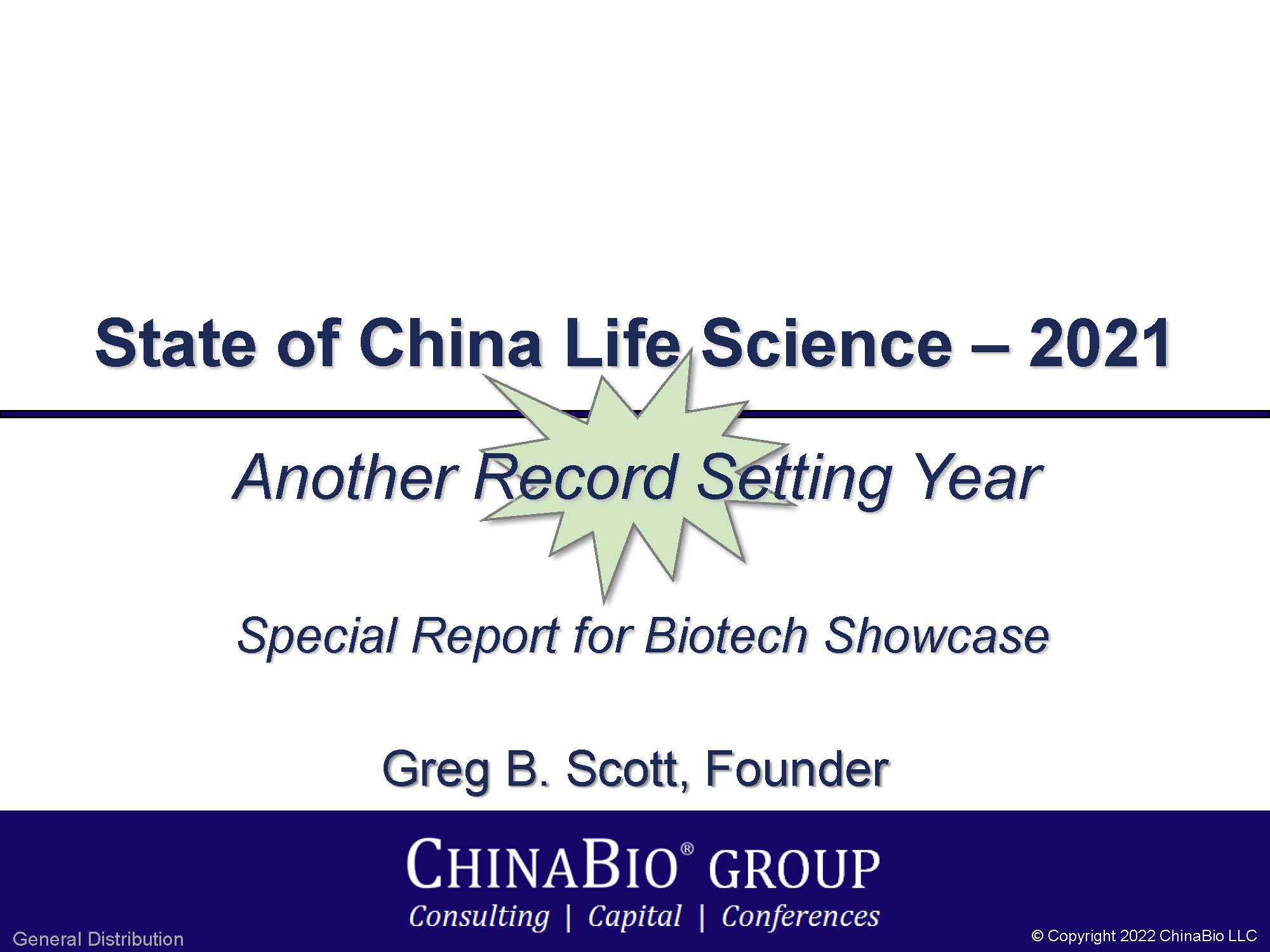Did you know?
ChinaBio® Group is a consulting and advisory firm helping life science companies and investors achieve success in China. ChinaBio works with U.S., European and APAC companies and investors seeking partnerships, acquisitions, novel technologies and funding in China.
Free Newsletter
Have the latest stories on China's life science industry delivered to your inbox daily or weekly - free!
Free Report
The Week in Review: 2007 a Good Year for US-listed China Life Science Companies
The ChinaBio® Stock Index (CBTX), an index comprised of 17 US-listed China-based life science companies, recorded an impressive 70% increase over calendar 2007, rising from 987 to 1674. That was far ahead of most US index returns, though it lagged the near-100% gain of most China indexes. The CBTX index hit a year high on November 5 when it closed at 1816. Like the stock market in general, the 17 companies in the index gave up some of their gains during the last two months of the year.
At the end of 2007, the roster of US-listed China life science companies was greatly different than its composition at the end of 2006. Four of the seven biggest enterprises of the 17-company list made their IPOs during 2007. These included 3SBio (NSDQ: SSRX), Tongjitang Chinese Medicine (NYSE: TCM), Simcere Pharma (NYSE: SCR) and WuXi PharmaTech (NYSE: WX).
Two other members of the top seven are also fairly new to being publicly owned. Mindray (NYSE: MR), at $4.2 billion, the largest market cap on the list and a maker of medical imaging machines, completed an IPO in September 2006. At $1.3 billion, China Medical Tech (NSDQ: CMED) was in third place. A hospital operator and medical equipment distributor, China Medical made its IPO in mid-2005.
As China’s stock markets have soared over the last two and one-half years, investing in China has moved from an exotic proposition to a more mainstream activity. As a result, US investors looked favorably on the IPOs of China-based life science companies. Mindray and WuXi PharmaTech did especially well. Interestingly, Mindray is a medical device company while WuXi is a CRO. The biopharma contingent of the list, most of them selling mainly to the China market, have not provided equally great stock price increases. Although profit margins are very high on most China drugs, none of the US-listed biopharmas has a product that generates large amounts of revenue. That, apparently, remains something still in the future.
In China biopharma news from last week, WuXi PharmaTech (NYSE: WX) announced it would spend $151 million to acquire AppTec Laboratory Services of St. Paul, Minn (see story). While criticized as an initiative that would introduce high costs into WuXi’s low-cost Chinese model, WuXi positioned the acquisition as a move that would add services and clients. As an interesting comparison, WuXi paid $151 million for a company with $70 million in revenue. WuXi, meanwhile, has a market cap of $1.9 billion and expected revenues of $135 million.
News reports once again highlighted the gene therapy anti-cancer drugs that are available in China (see story). Benda Pharma (OTCBB: BPMA) owns a majority interest in the company that makes Gendicine and Shanghai Sunway Biotech, majority owned by San Francisco-based Mergen Biotech, produces Oncorine. Although the two drugs are the only currently approved members of a once-promising sector of drug research, the drugs have not been big sellers. Moreover, the trials conducted for China approval were not sufficiently objective in design to convince Western analysts that the drugs are effective.
Agenix (ASX: AGX), an Australian biotech company, announced first month’s revenue of 10 million RMB ($1.4 million) for YouHeDing, a treatment for hepatitis B (see story). YouHeDing is a novel formulation of adefovir dipivoxil that was developed and tested in China. The SFDA approved the drug in October 2007. Agenix predicts that YouHeDing will eventually attain revenue of 320 million RMB ($44 million) just from China sales. Agenix and Sinopharm will co-promote the drug in China.
And finally last week, China moved forward with medical system reform, announcing that the state government would extend basic services to the rural citizenry and increase its commitment to overall healthcare (see story). Nevertheless, the inhabitants of China can expect to still pay about 50% of the cost for healthcare. For biopharma companies, more healthcare means a bigger market for drugs. China’s state legislature must now decide whether to enact the reforms recommended by the Ministry of Health.
Disclosure: none.
ChinaBio® News

Greg Scott Interviewed at BIO-Europe Spring
How to bring your China assets to China in 8 minutes

"Mr. Bio in China."
Mendelspod Interview
Multinational pharma held to a higher standard in China





